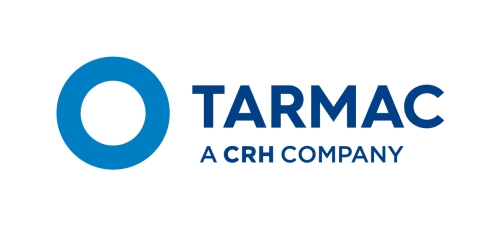Getting a grip on high-friction asphalt

Brian Kent, national technical director at Tarmac
Local road maintenance and potholes are an issue of concern to the public, local authorities and politicians due to the negative consequences for the safety of road users and impact on the local economy.
Tarmac promotes a new approach including long term budget certainty, use of asset optimum management and digital tools to enable a planned maintenance approach and selection of the materials based on whole life costing.
Advances in asphalt technology have meant contractors and suppliers are helping to develop new ideas and innovations that can significantly contribute to meeting demanding productivity targets. Investment in research and development has led to the creation of a variety of bespoke asphalts designed to meet the most pressing challenges of our industry, including lower carbon footprints, minimised public disruption and faster completion times.
Addressing the challenge
One asphalt solution that has been developed is UltiGrip, a new skid-resistant asphalt developed by Tarmac, which delivers improved safety and enhanced customer experience while unlocking whole-life cost savings.
Brian Kent, national technical director, explains the rationale for its development: “Providing safe and secure roads is always the number one priority for highways authorities. It’s crucial that high-risk locations such as approaches to pedestrian crossings and slip roads, as well as exposed rural routes and motorways, are surfaced with the most appropriate materials available.
“As a solutions provider we have a responsibility to work closely with our customers and clients to drive the development of products that can support their needs, considering at all times the outcome for the road user. With growing demand for durable skid-resistant products where conventional asphalt provides an insufficient level of grip, we identified an opportunity Local road maintenance and potholes are an issue of concern to the public, local authorities and politicians due to the negative consequences for the safety of road users and impact on the local economy. create a new high-friction product to extend an asset’s life cycle, minimise the maintenance burden and reduce the whole-life costs of maintaining highways assets.”
The solution differs from other high-friction surfaces in its unique composition. Unlike traditional products, its skid resistant properties are not added at the end of the surfacing process but are intrinsic to the mix. A calcined bauxite aggregate and a durable clear binder are used that, when combined, offer a durable, textured finish and reduce the dangers of skidding.
The abrasive physical and mechanical properties of Bauxite make it ideal for use in high-friction surfaces. To ensure the asphalt can deliver in terms of its durability and longevity, a specialist polymer modified binder is used. Its unique attributes result in the mix being easy to compact, robust and transportable over longer distances without compromising its performance. In case that wasn’t enough, it can additionally be mixed with coloured pigments where a more distinctive appearance is required.
The long-term view
High-friction properties aren’t the technology’s only benefit, however, as safety and lifetime cost reduction were also key considerations at the development stage, mirroring clients’ own concerns. Brian Kent continues: “Faced with continuing budgetary challenges, highways authorities are required to deliver pavement renewal projects that are cost effective, as well as hard-wearing and safe. Most traditional anti-skid asphalts typically last between two to four years according to many Local Authorities and can be costly to replace”.
“By lasting on average more than three times longer than similar surfaces, UltiGrip’s superior performance reduces the maintenance burden over its service lifetime. Another benefit is that it can be laid in a single pass, meaning that operatives spend less time overall on site, improving safety and reducing labour costs in both the short and long-term.”
Putting theory into practice
The Ultigrip solution provided the answer to a challenging brief on the A64 in Yorkshire, where Highways England needed to deliver a durable, anti-skid asphalt on a busy slip road. The junction with the A1237 outside of York had been highlighted as in urgent need of improvement following an increase in the number of incidents being recorded.
Working in collaboration with principal contractor Aone+, the project team was briefed to find a solution that would replace the existing, worn high-friction surface with a more durable asphalt, all the while delivering better whole-life performance, boosting safety and minimising unplanned delays.
Andrew Sharp, programme development manager, Aone+ comments: “Finding a safe and robust product that would suit the project’s requirements was essential. However, it was crucial that once we had completed the job there would be no additional requirement to revisit the site for regular maintenance.”
“We laid approximately 250 tonnes of the innovative new UltiGrip bauxite asphalt after having calculated the substantial financial and time savings that it would deliver over its lifetime, despite the upfront costs being initially greater than a conventional solution. When you factor in the comparative reduced amount of maintenance, the whole-life benefits are impressive. These include a £370,000 reduction in whole-life costs, with 28 days of closures and 2,800 hours of labour saved over its serviceable life.”
A proven formula
Since the project’s successful completion last year, all of the early signs are encouraging, and the new asphalt has performed beyond expected standards, providing better visibility, strength and safety.
Brian Kent concludes: “The finished surface will stand up to the task for many years to come and require little or no maintenance. With lower whole-life construction costs and an increased lifespan, we’ve also been able to demonstrate benefits in terms of operator safety and a reduction disruption for our local residents”.

